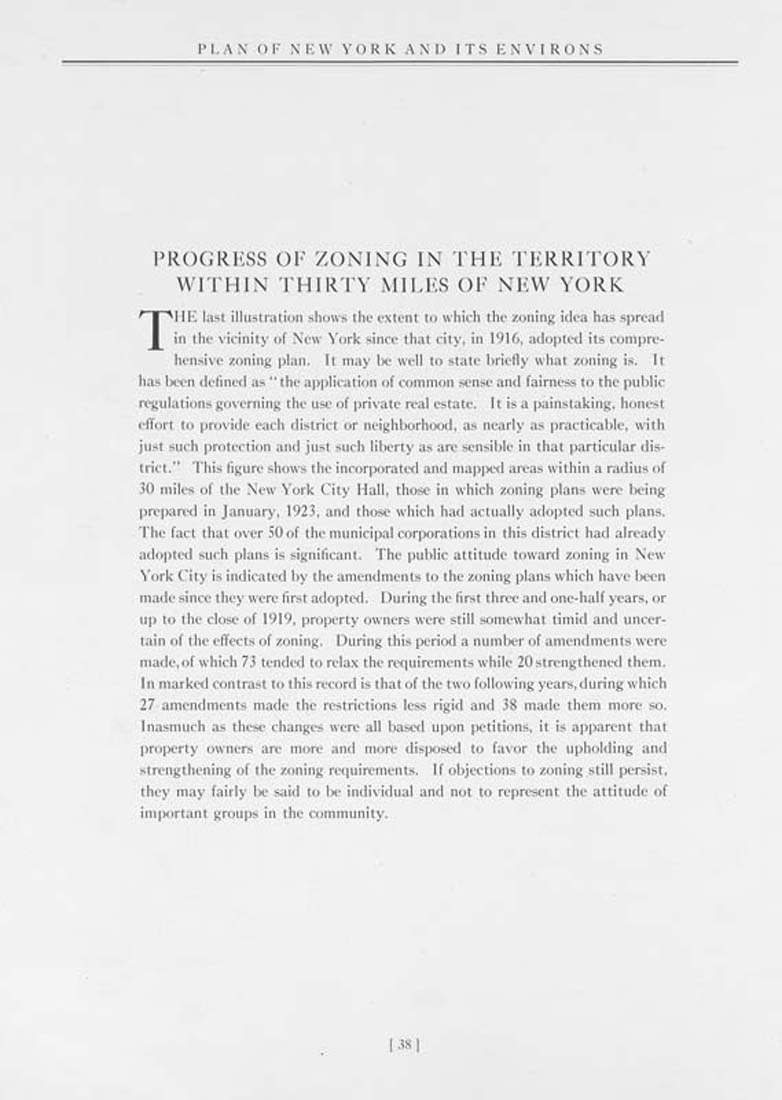PLAN OF NEW YORK AND ITS ENVIRONS
PROGRESS OF ZONING IN THE TERRITORY
WITHIN THIRTY MILES OF NEW YORK
THE last illustration shows the extent to which the zoning idea has spread
in the vicinity of New York since that city, in 1916, adopted its compre¬
hensive zoning plan. It may be well to state briefly what zoning is. It
has been defined as "the application of common sense and fairness to the public
regulations governing the use of private real estate. It is a painstaking, honest
effort to provide each district or neighborhood, as nearly as practicable, with
just such protection and just such liberty as are sensible in that particular dis¬
trict." This figure shows the Incorporated and mapped areas within a radius of
30 miles of the New York City Hall, those in which zoning plans were being
prepared in January, 1923, and those which had actually adopted such plans.
The fact that over 50 of the municipal corporations in this district had already
adopted such plans is significant. The public attitude toward zoning in New
York City is indicated by the amendments to the zoning plans which have been
made since they were first adopted. During the first three and one-half years, or
up to the close of 1919, property owners were still somewhat timid and uncer¬
tain of the effects of zoning. During this period a number of amendments were
made, of which 73 tended to relax the requirements while 20 strengthened them.
In marked contrast to this record is that of the two following years, during which
27 amendments made the restrictions less rigid and 38 made them more so.
Inasmuch as these changes were all based upon petitions, it is apparent that
property owners are more and more disposed to favor the upholding and
strengthening of the zoning requirements. If objections to zoning still persist,
they may fairly be said to be individual and not to represent the attitude of
important groups in the community.
38
|








